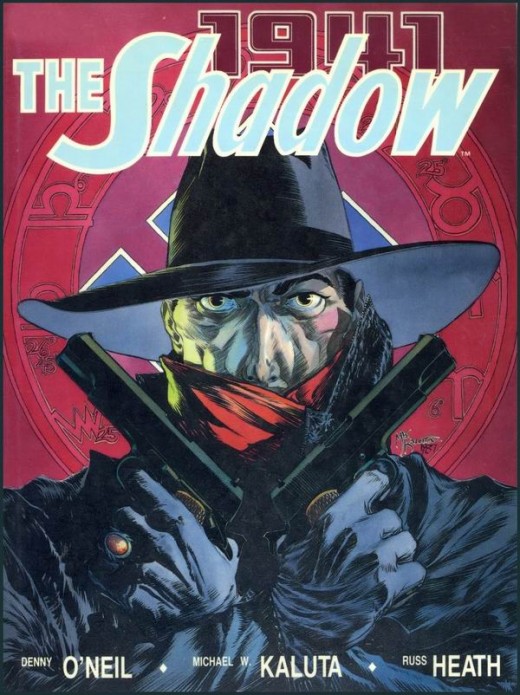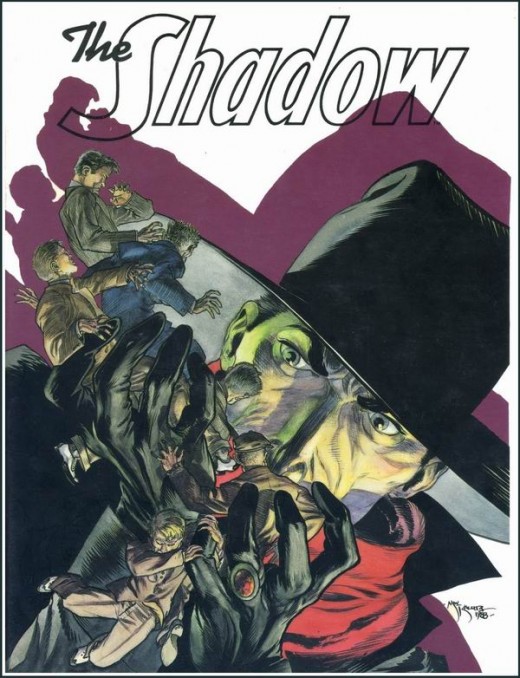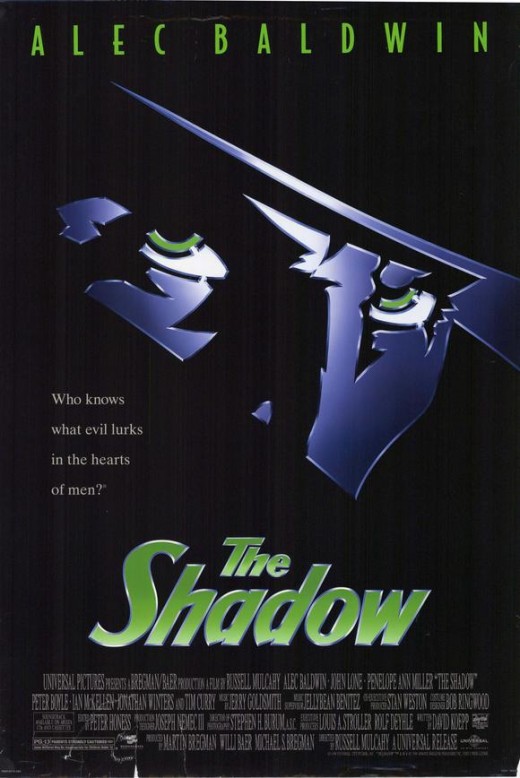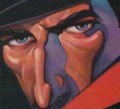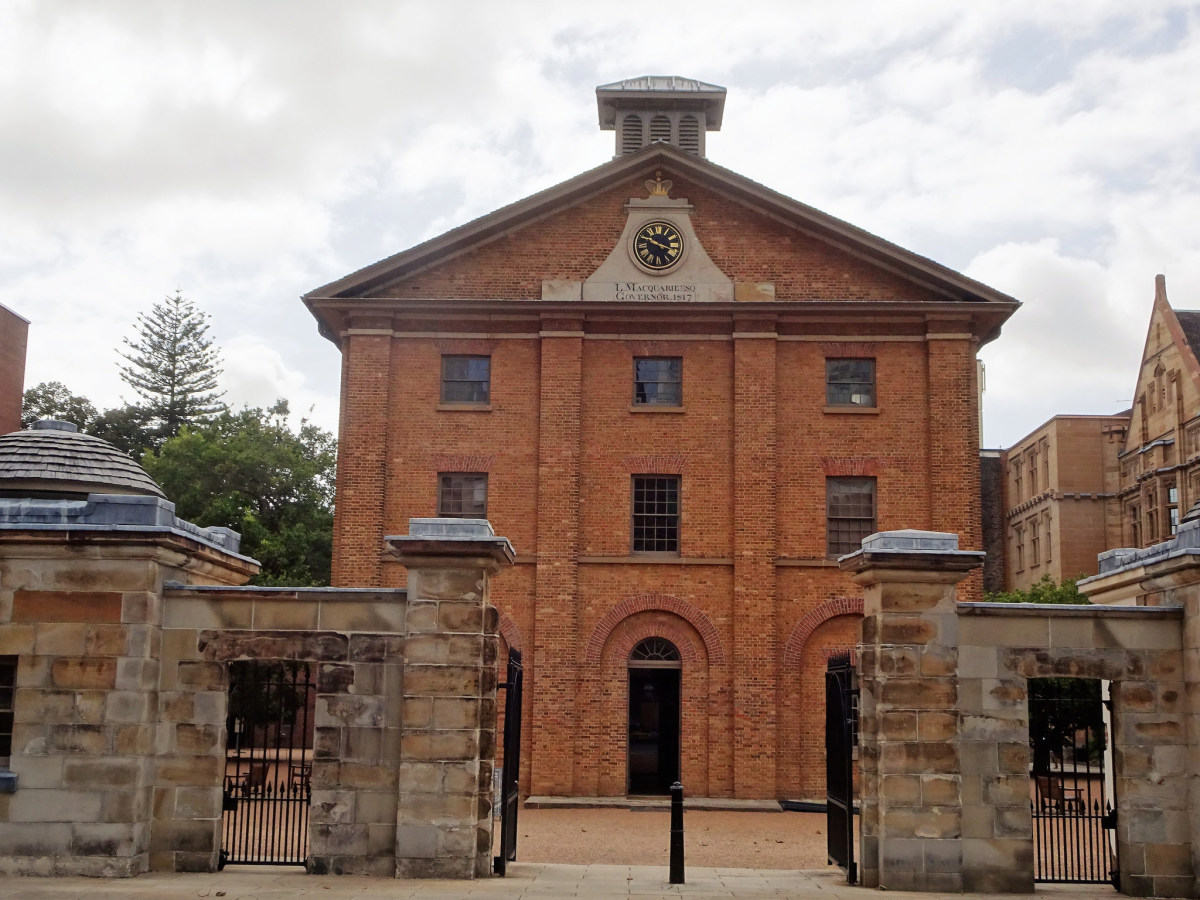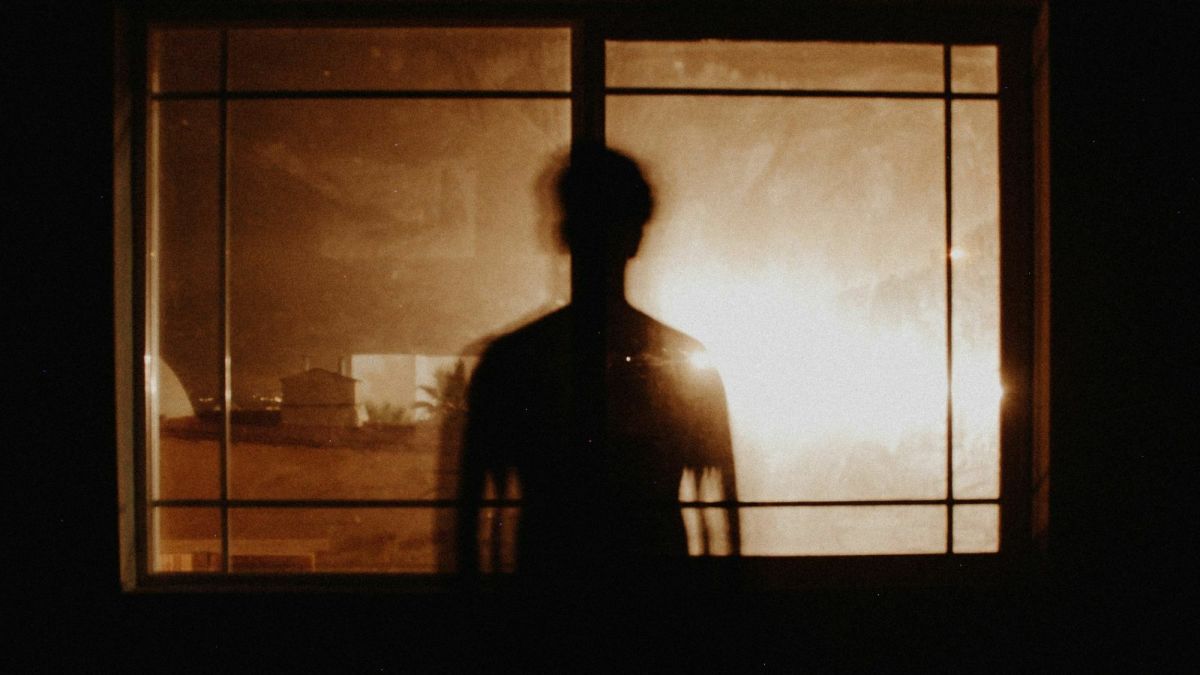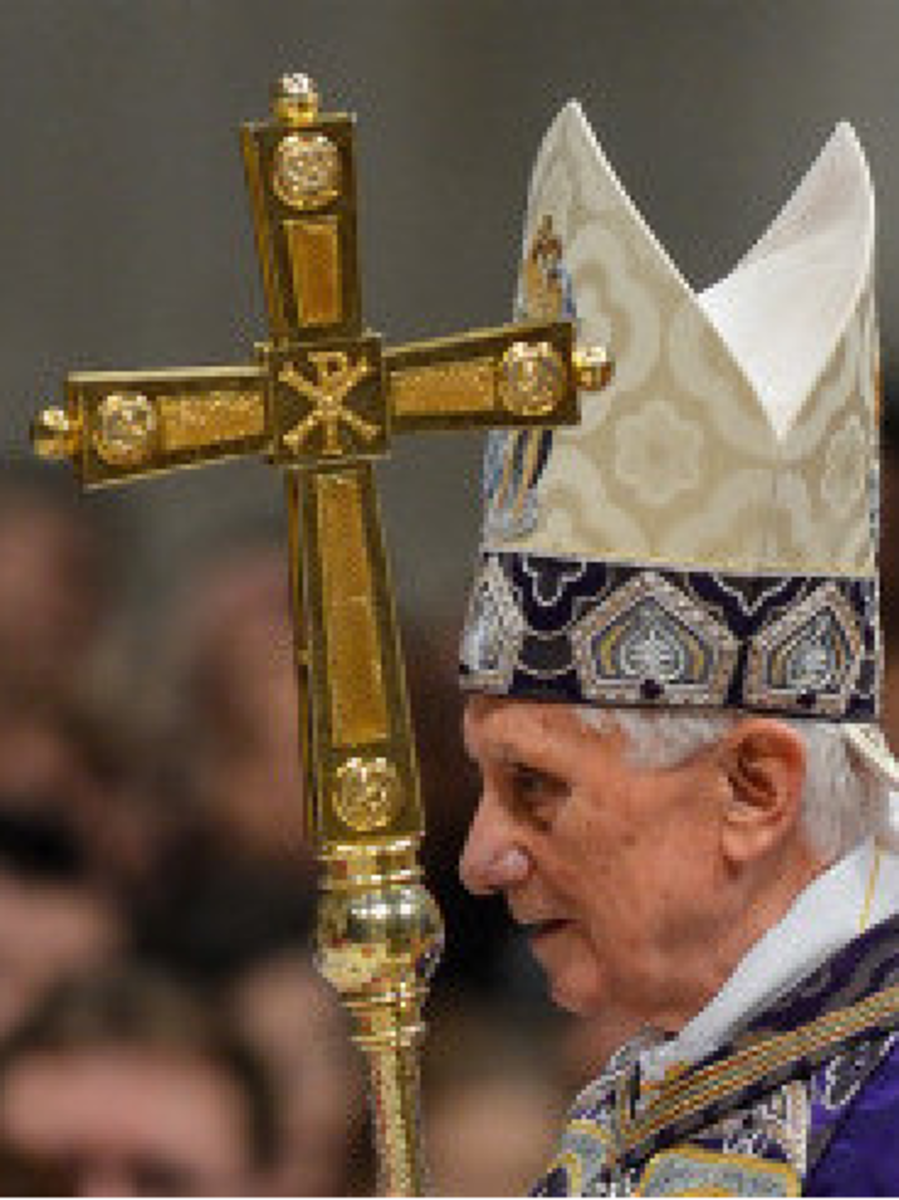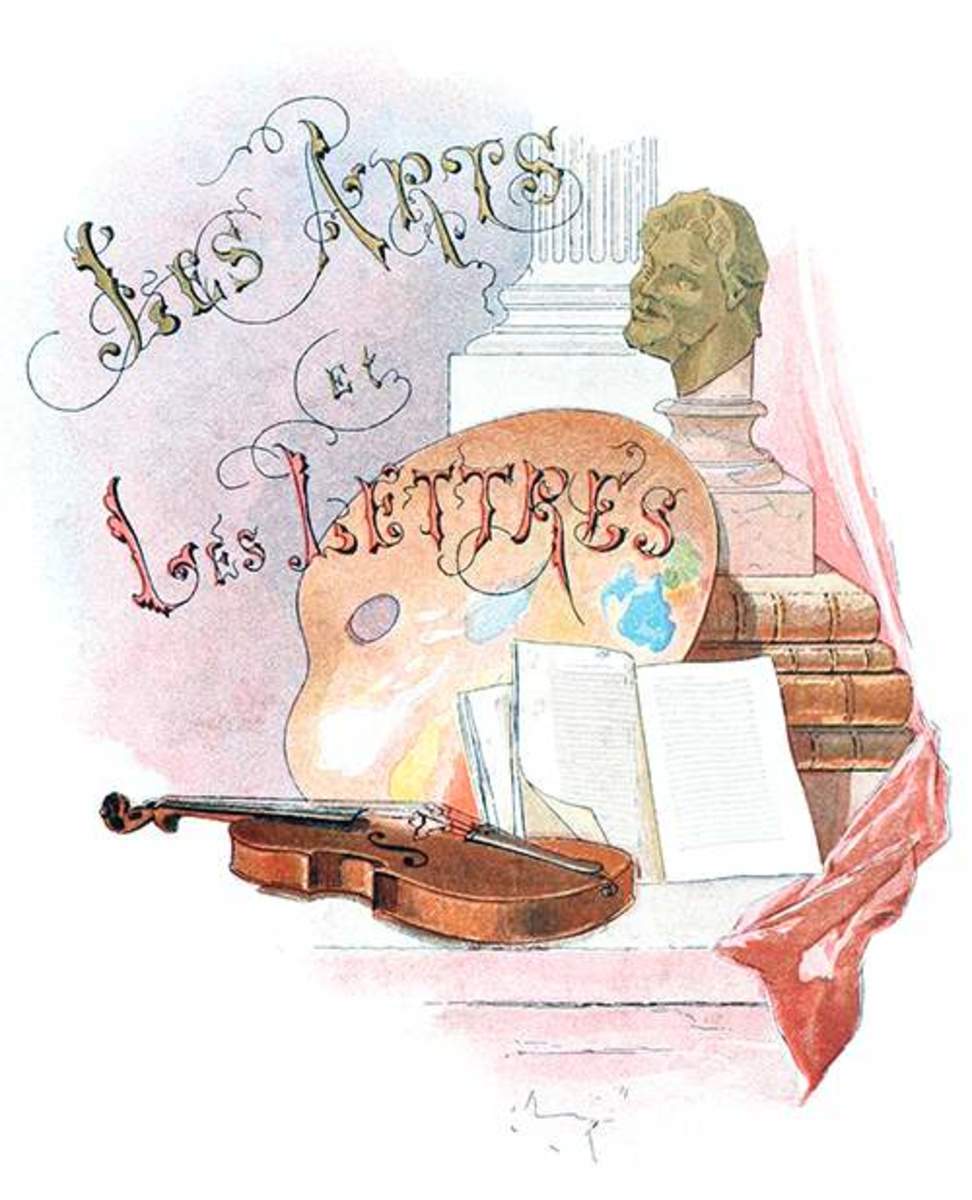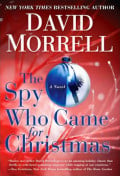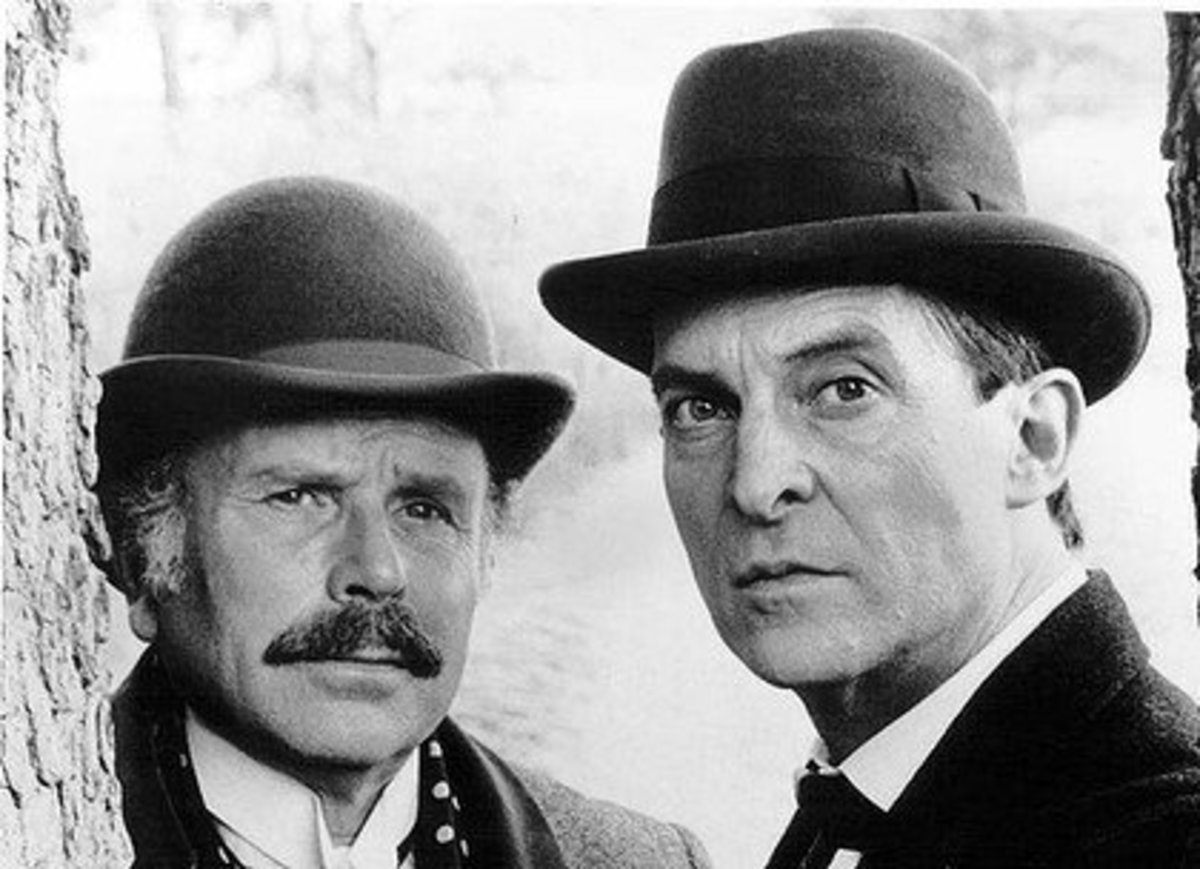The Shadow and Walter Gibson
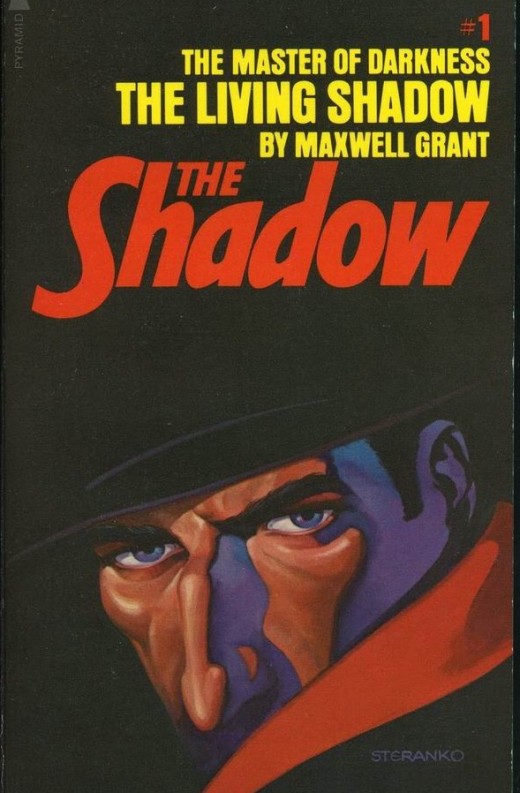
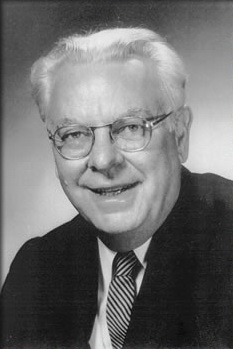
1930, and a mentally unstable radio writer by the name of Harry Charlot (who was eventually murdered in a Bowery flophouse) comes up with a name for a previously anonymous narrator of radio mystery series The Detective Story Hour.
The radio program begins with actor James La Curto doing a hammy cackling laugh and intoning the words, “The Shadow knows . . .” Listeners enjoyed this new addition, and soon Street & Smith publications are trying to figure out how to exploit “The Shadow” in print as well.
Walter Gibson (1897-1985) was a professional magician, a reporter, the ghostwriter for the world-famous magician Howard Thurston and the even more famous Harry Houdini, and the author of several non fiction books about magic and card tricks.
One day in December 1930, Gibson was visiting New York, and walked into the office of Street & Smith editor Frank Blackwell. He walked out with the assignment that would become the source of his lasting fame as a legend of pulp fiction.
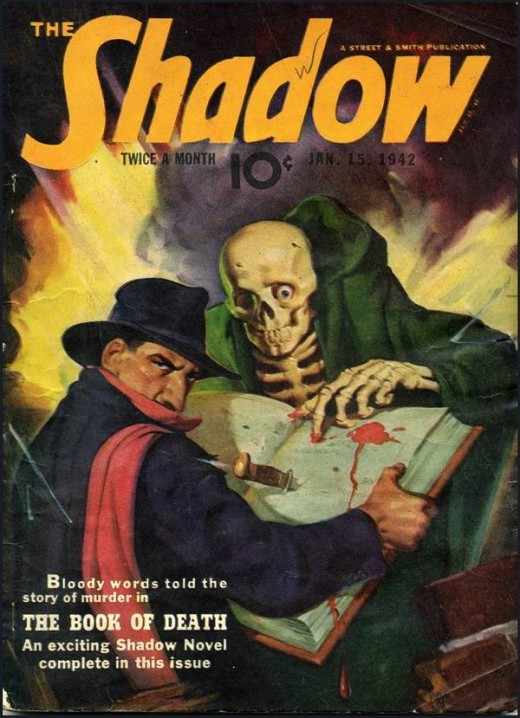
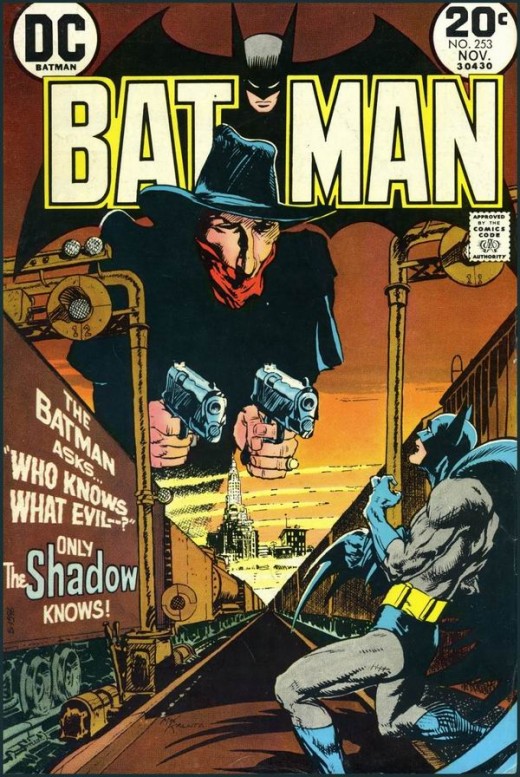
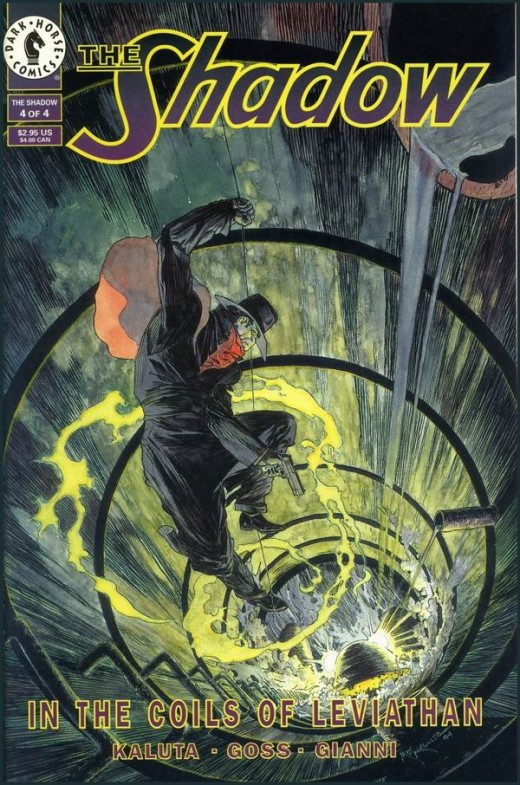
The premiere issue of The Shadow was already scheduled to hit the newsstands in a little more than two months’ time and Gibson began working on the story that night, on the train ride back to Philadelphia.
The first issue of The Shadow, cover date April 1931, went on sale right on schedule. Walter Gibson used the pen-name “Maxwell Grant.” he devised the name after two “friends in magic,” Maxwell Holden and U. F. Grant, but the moniker would remain a house name owned by the publisher.
The novel-length story opens on a New York bridge clouded by mist, a young man prepares to commit suicide. He leans over the distant dark waters and his fingers loosen their hold on the rail. Suddenly, he is gripped by an iron force.
Someone drags him back, someone with an irresistible power. The young man sees a frightening figure before him, “a tall black-cloaked figure that might have represented death itself. . . . The stranger’s face was entirely obscured by a broad-brimmed felt hat bent downward over his features, and the long, black cloak looked like part of the thickening fog.”
Still dazed he hears the stranger’s offer of a new lease on life: “I shall improve it . . . I shall make it useful. But I shall risk it, too. Perhaps I shall lose it, for I have lost lives, just as I have saved them.” A few paragraphs later, the young man has sworn his allegiance and the stranger vanishes, “like a shadow!”
So began that great epoch of pulp heroes and superheroes. The Shadow became a sensation, and it would make Street & Smith a fortune in sales and licensing fees, the magazine would last for nearly two decades.

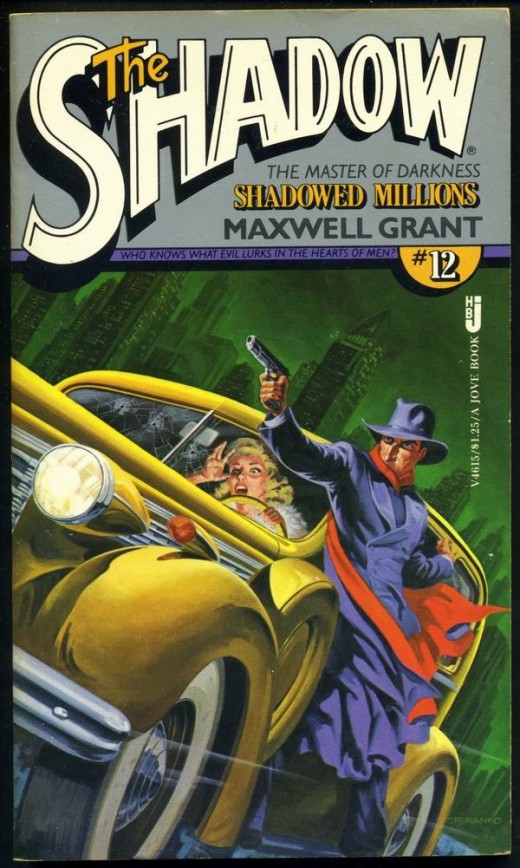
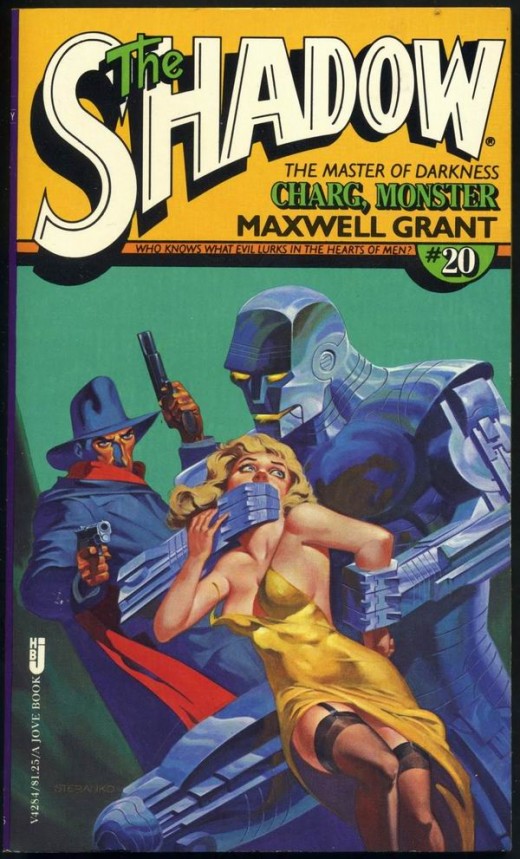
A compulsive writer, Gibson typed so furiously his fingers bled. “To meet the Shadow’s schedule, I had to hit 5,000 words or more per day,” he once recalled. “I made 10,000 words my goal and found I could reach it. Some stories I wrote in four days each. . . . On these occasions I averaged 15,000 words a day, or nearly 60 typewritten pages, a pace of four or five pages an hour for 12 to 15 hours. By living, thinking, even dreaming the story in one continued process, I found ideas came faster and faster.” Incredibly, he maintained this pace for more than a decade, at his peak he is estimated to have written 1,680,000 words a year!
Gibson wrote 283 Shadow novels in all. The choice of Walter Gibson to chronicle the immortal Shadow’s adventures could not have been more inspired, he was the perfect match of author and character. As a magician and historian of magic, he brought to the Shadow a unique perspective. The stories were the literary equivalent of a magicians stage act, full of tricks, threats of sudden death, and a mysterious atmosphere.
Gibson’s one frustration with the Shadow and the assignment that would take up such an important part of his life was its enforced anonymity. All of Gibson’s novels would be credited to “Maxwell Grant”.
As the new radio series and magazine soared to prominence Walter Gibson’s crucial contribution to it remained almost unknown outside of pulp inner circles. In later years, the author’s true identity was revealed and Gibson, finally out of Maxwell Grants shadow, did get to enjoy the acclaim of legions of Shadow readers around the world.
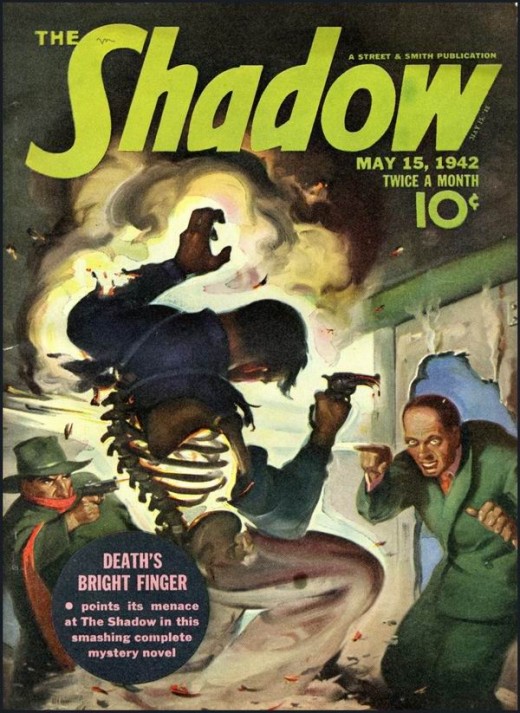
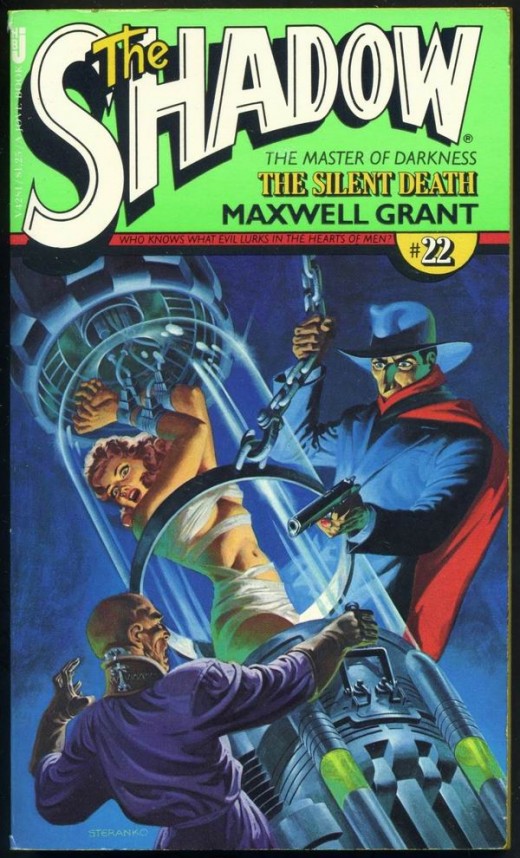
22 year old Orson Welles voiced Lamont Cranston aka The Shadow on the radio show in 1937. The character also appeared in newspaper strips, comic books and graphic novels. DC Comics published various series of Shadow comics in the 70’s 80’s and 90’s. Dark Horse comics acquired the comic rights in the mid 90’s.
B-movies and serials featuring the character of the Shadow appeared in the 30’s and 40’s.
In 1994 The Shadow, a movie starring Alec Baldwin as Lamont Cranston appeared in cinemas. Directed by Russell Mulcahy it also starred John Lone, Penelope Ann Miller, Peter Boyle, Tim Curry and Ian McKellen. Music composed by Jerry Goldsmith.
Directors Sam Raimi and Quentin Tarantino have both shown interest in future movie projects featuring The Shadow.
